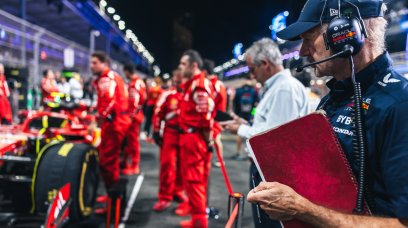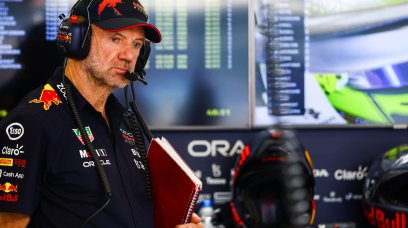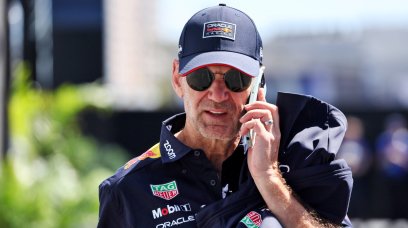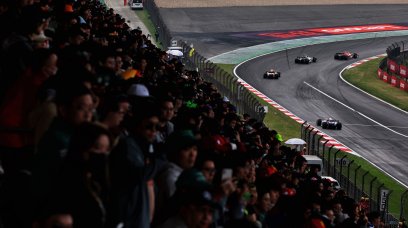After what seems like a very short winter break, but is actually a scarcely-believable three-month interlude, Formula 1 returns to television screens this weekend as the Bahrain Grand Prix kicks off the 2022 season. It's much more than a standard season opener, too, as this race marks the start of F1's new era – the culmination of several years of research and development from the sport in collaboration with the FIA and technical committees made up by personnel from the teams. The changes introduced aren't minor, either. The technical rulebook has changed at a fundamental level, with the biggest change being how the cars generate downforce. The sport has moved away from a focus on over-body airflow downforce generation and, instead, will rely on a ground effect philosophy. Put simply, the cars are now pulled down onto the ground via the airflow running underneath, rather than being directed by the air rushing over the top. This is aimed at reducing the turbulent air thrown off by a car, which should allow pursuing cars to remain closer for longer, allowing for closer wheel-to-wheel racing and more overtaking opportunities. Other changes include a switch to 18-inch wheels and tyres, a huge step up from the old 13-inch specification, as well as the introduction of a new E10 fuel that has resulted in plenty of work from the engine manufacturers to make up for the horsepower loss. Coupled with the fuel change is the introduction of an engine freeze – the engine specifications the teams will start the season with aren't permitted to be changed for the next few years. It's therefore imperative for the engine manufacturers that they are as powerful and reliable as they can be, as there are very few avenues to address any shortcomings from now on.
Are Ferrari ready to return to the front?
Looking back over the two pre-season tests in Barcelona and Bahrain, the Scuderia consistently impressed by placing at or near the very top of the timesheets throughout. Both Carlos Sainz and Charles Leclerc exploited what appeared to be good inherent speed from the F1-75, with the car adapting well to the two different circuit types. Added to that was metronomic reliability from the Ferrari power unit, with the team regularly amongst the highest mileage figures at the end of each day. Given that Ferrari sacrificed their 2021 season in order to focus on the development of their 2022 challenger, it's perhaps no surprise that the F1-75 appears to be one of the strong pre-season favourites, but there may be more to their apparent successful process than that. Recently introduced Aerodynamic Testing Restrictions and time limits on the use of Computational Fluid Dynamics (CFD) are intended to help equalise performance levels across the board. These restrictions mean that lowly-performing teams are given access to the most time in the wind tunnel and on CFD. So, given the looming technical regulation changes, Ferrari's poor 2020 and reasonably poor 2021 seasons have resulted in them being the 'front-running' team with the most access to the tools required to test and correlate their design. Coupled with their steps forward on the power unit front, having struggled for two years after the compromises made in late 2019, now is the time for Ferrari to step back into the ring with the Red Bull and Mercedes teams – can they deliver on their pre-season promise?
Do Red Bull have the early upper hand?
With Max Verstappen setting by far and away the fastest time of the Bahrain test, as Red Bull rolled out a heavily upgraded RB18 for the final day, it looks as though the Milton Keynes-based team haven't suffered much as a result of having had to divide their attention between the 2022 car, along with trying to win the 2021 title with an increasingly outclassed RB16B. Tyre compound adjusted, Verstappen finished about half-a-second clear of Leclerc, and a second faster than what George Russell managed on the same compound. Red Bull's Chief Technical Officer, Adrian Newey, is well-versed in huge regulation changes, having designed the dominant 1998 McLaren MP4/13 when F1 moved to a narrow-body concept, as well as the 2009 Red Bull RB5 becoming F1's standard-setter by the end of the season during the last widespread aero changes. Newey is a renowned aero master, with the move to ground effect possibly playing right into his wheelhouse. But his Mercedes equivalent, James Allison, has risen in recent years to become every bit Newey's equal and, coupled with new Technical Director Mike Elliott, there's little reason to think the W13 will prove a dud. While the Mercedes has initially struggled, with the extreme sidepod design of the W13 raising eyebrows when the unattractive-looking machine rolled out at the start of the Bahrain test, there's a sense that there's immense promise buried in the package – if Mercedes can figure it out. Even if the W13 fails to get off to a flying start, the fact that an eight-time consecutive World Champion team have come out with such a risky concept suggests that they have plenty of reason to be confident in it. However, all eras of dominance eventually come to an end. There is the possibility of the behemoth team creating their first dud in almost a decade and, given their comparative lack of aero testing time - for the opposite reasons to Ferrari, as explained above - Mercedes could have simply gone down the wrong garden path.
Who will make up the midfield pack?
It's very difficult to figure out a pecking order for F1's mid-pack, given the possibility that any of the teams could spring a surprise after successfully sand-bagging their way through testing. Following a very strong start in Barcelona, McLaren dropped the ball in Bahrain as they encountered numerous issues related to their front axle (apparently brake-related), and lost quite a lot of mileage and preparation time. When they were on track, the MCL36 appeared solid, if unspectacular, and an unknown quantity for the start of the season. Haas and Alpine could find themselves up next – the VF-22 proved extremely fast when let off the leash by the returning Kevin Magnussen on Friday, with Mick Schumacher proving similarly impressive on Saturday. The American team sacrificed the entirety of 2021 to focus on the new regulations, as well as having the most CFD and wind tunnel time – there are simply no excuses if the team don't improve significantly this season. Alpine, too, stunned when Fernando Alonso popped in a quicker lap than Russell in the final half-hour of running on Saturday. The A22 was solidly unspectacular throughout testing, but Alonso's time suggests the French team may have been intentionally keeping a low profile. Aston Martin, AlphaTauri, Alfa Romeo, Williams – all kept their heads low during testing, but could prove to be one of the surprise packages of the season. It's going to be fascinating to find out who has nailed the new regulations, and whether any of the expected big teams have dropped the ball.
Most read




















